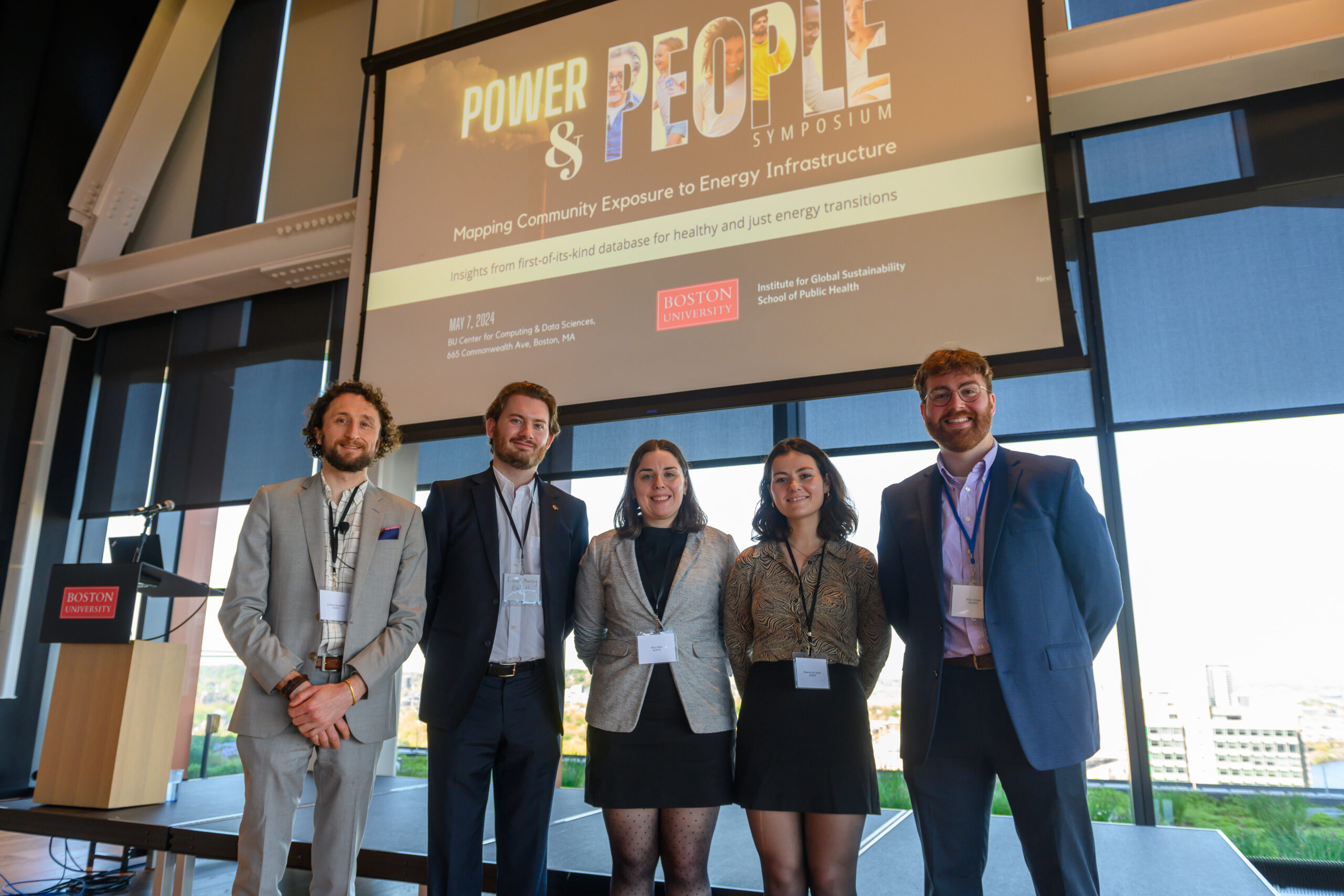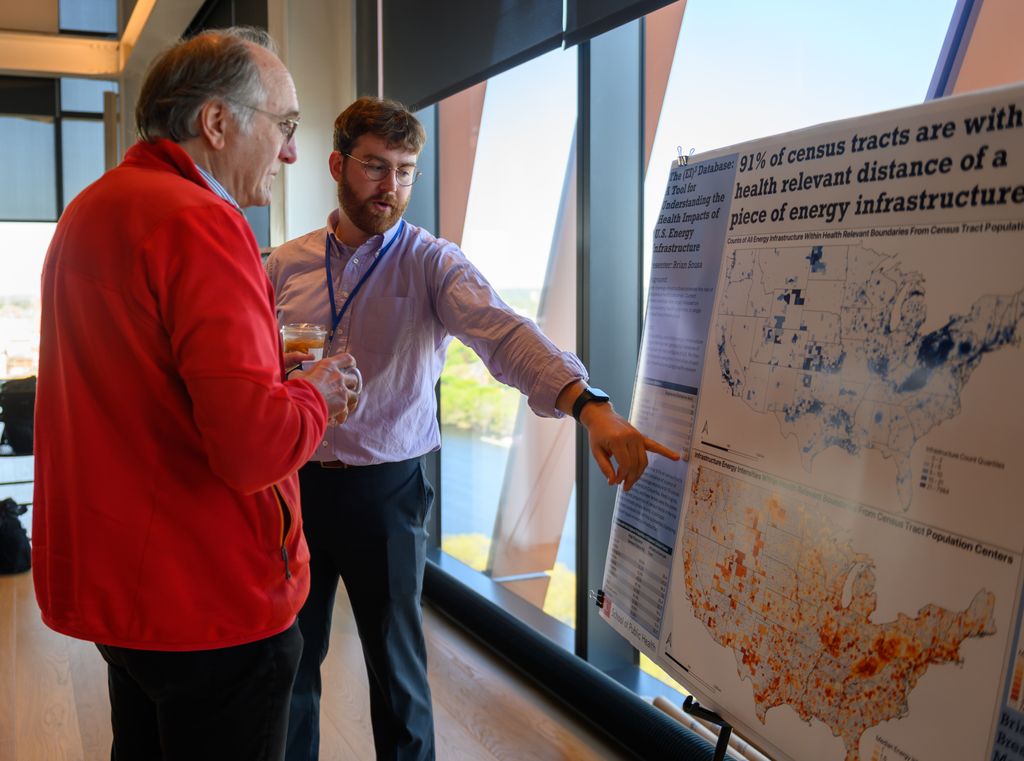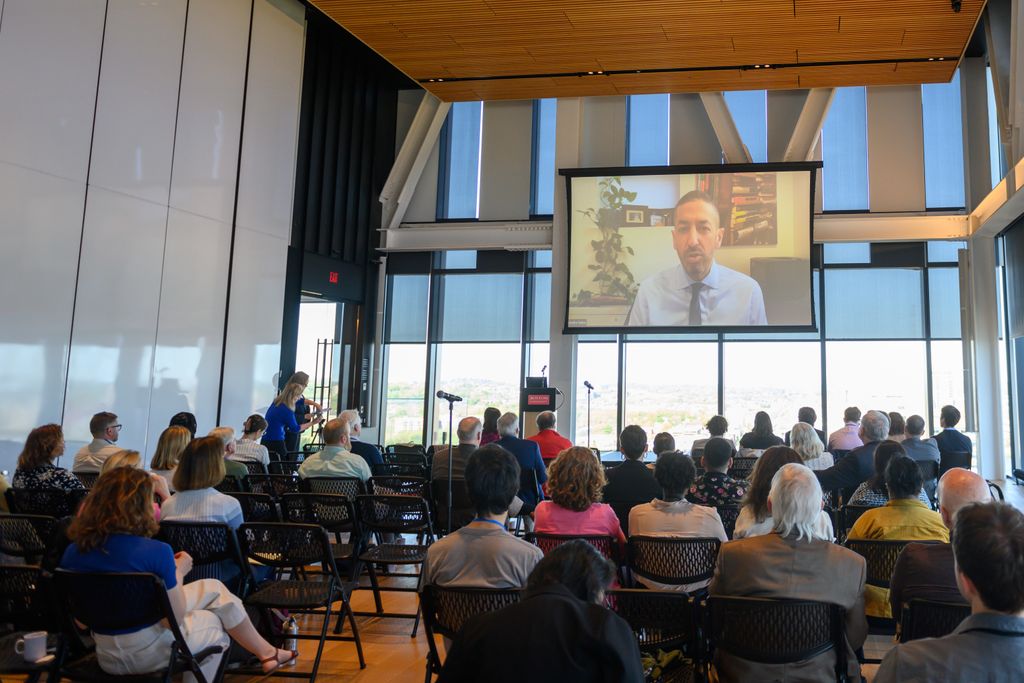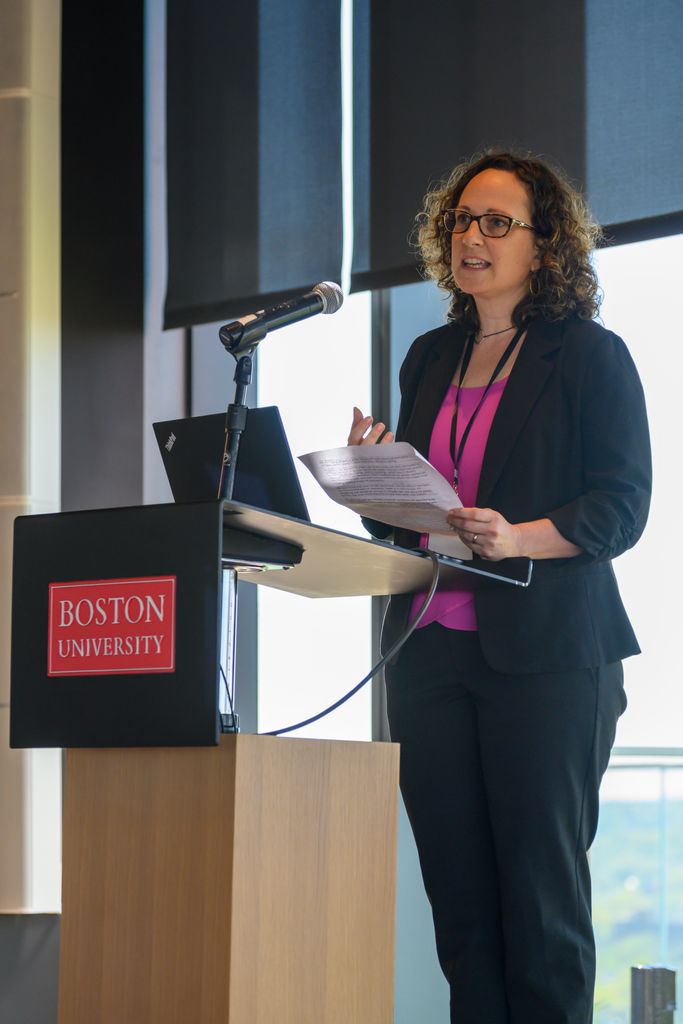SPH Researchers Hold Symposium on Energy Systems and Health.

From left: Jonathan Buonocore, Finlan Mooney, Mary Willis, Breanna Van Loenen, and Brian Sousa at the Power & People Symposium on May 7. Photo: Molly Potter
SPH Researchers Hold Symposium on Energy Systems and Health
With support from the School of Public Health and BU’s Institute for Global Sustainability, Jonathan Buonocore and Mary Willis spearheaded the symposium to share with stakeholders their latest research project, a first-of-its-kind database mapping community exposure to energy infrastructure.
Early analysis of a first-of-its-kind database developed by researchers at the School of Public Health suggests that 91% of census tracts in the United States are close enough to energy infrastructure to warrant consideration of potential adverse health effects.
“There is mounting evidence that living nearby oil and gas infrastructure can be harmful to health, but there is not a single resource showing all the infrastructure, from the well to the compressor to the pipeline, that then also includes the characteristics of the communities living nearby,” says Jonathan Buonocore, an assistant professor of environmental health and a co-principal investigator on the project, The Energy Infrastructure Exposure Intensity and Equity Indices (EI3) Database for Population Health, with Mary Willis, assistant professor of epidemiology. “The information could be used to help usher in a healthy and just energy transition.”

Constructed in a piecemeal fashion as the U.S. rapidly grew and industrialized over the past century, today’s energy infrastructure is a patchwork of millions of components scattered throughout the country. Data on the locations of these components is often available, says Buonocore, but because jurisdiction over energy infrastructure is divided among various government agencies, it can be challenging for communities to access or interpret.
“All the data underlying the [EI3] dataset is public, but this will be the first time it is all in the same place,” he says. Buonocore has previously used geographic data to link oil and gas production to $7.4 billion in annual health damages, including thousands of early deaths and childhood asthma cases largely in surrounding communities, but also in downwind urban centers. “We are hoping that [the dataset] could be used by researchers, policymakers, NGOs, and community groups to really understand what energy infrastructure is near them and the effect that it is having on the community, to then, hopefully, influence the equitable siting of future energy infrastructure.”

On May 7, Buonocore and Willis spearheaded a symposium, Power & People: Mapping Community Exposure to Energy Infrastructure, to present preliminary insights from and solicit external input on the developing database. The day-long event was hosted in BU’s new Center for Computing and Data Sciences, which, suitably, is the greenest building in BU’s history and one of the most sustainable buildings in the region.
The Boston University Institute for Global Sustainability (IGS), in partnership with SPH, awarded Buonocore and Willis its first-ever Sustainability Research Grant to fund the establishment of the EI3 database. With the support of Brian Sousa, Breanna Van Loenen, and Fintan Mooney, research data analysts at SPH, as well as faculty and student collaborators in BU’s Earth and Environment Department, the team recently finished entering the locations of active oil, gas, coal, and electrical infrastructure to the database.

“We are still in the information-gathering stage,” noted Willis. Ultimately, the team intends to add a measure of the intensity of exposure and link that to health outcomes using epidemiologic methods, laying the groundwork for future study in areas such as the health impacts of infrastructure hotspots on environmental justice communities and the climate and health co-benefits of clean energy programs.
“But first, we need to show who lives nearby [the infrastructure] because that [relationship] does not currently exist,” says Willis.
During his introductory remarks to the symposium, Dean Sandro Galea highlighted the “enormous potential” of the EI3 database, a sentiment echoed throughout the day by various other speakers and panelists.
“The way we connect is by talking about our families and talking about health—everybody cares about health,” said panelist Andee Krasner of her volunteer work with Mothers Out Front, a national organization that brings together local teams of mothers and other community members to campaign for climate justice at the local and state levels. “Making that connection between energy infrastructure and health will really help us as advocates.”

Altogether, the speakers and attendees represented more than 20 different organizations engaged in the energy sector, ranging from national nonprofits and local grassroots organizations to state and local government agencies, such as the National Resources Defense Council, Environmental Defense Fund, GreenRoots, HEET (Home Energy Efficiency Team), Massachusetts Department of Environmental Protection, and Boston Housing Authority.
The presentation materials from the People & Power symposium, with an introduction to the fledgling EI3 database, are now publicly available on the IGS website. In the future, the research team hopes to make the full database freely available online as well. They are actively seeking additional funding to sustain and advance the promising—and following the symposium, much-anticipated—project.
